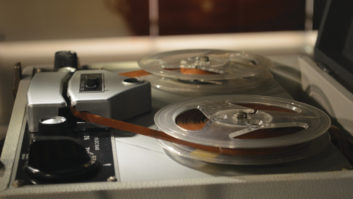Forty-eight years ago this spring, President John F. Kennedy said, “I believe that this nation should commit itself to achieving the goal, before this decade is out, of landing a man on the moon and returning him safely to the Earth.” Despite doubts about the scope of the challenge, the country did it; and a great deal of creativity and innovation emerged as byproducts.
When we dream about remaking radio into a successful 21st century enterprise, sometimes our goal feels as far away as the moon must have seemed then.
Like the early space program, radio’s recent attempts to transform itself have seen misfires.
Thirteen years ago, the industry’s commercial leadership promised creativity and innovation when it urged Congress to approve changes to national communications laws. The changes within the 1996 Telecom Act eliminated national ownership limits and eased local limits with a tier system based on market and cluster size.
Consolidation, industry executives said, would result in new formats and revitalization of the medium. Largely, it did not. Consolidation doesn’t produce new formats and revitalization. It won’t do so in satellite radio; it was never going to in broadcast radio. Consolidation is a survival and profit strategy. You can argue about whether it is necessary at any given time; but the predictable impact in the product itself is homogenization.
The discussion is relevant now because, with radio revenues falling and with the overall economy causing clear skies to seem farther away than ever, commercial U.S. radio leaders may be tempted to invest new energy in pushing for further deregulation of ownership caps.
Whether the political environment would be favorable for such a move is questionable; but beyond that, we hope that the leadership of radio will choose instead to direct its resources toward improving its product — not out of altruism, but as a survival and profit strategy itself.
Indeed, the economic situation in the country makes this an opportune time to do so. Like most of America, the radio industry must cinch its belt because of the downturn. But the economy also gives radio some temporary, if belated, cover. Our industry’s economic woes don’t stand out in such stark contrast right now; we’re far from the only ad medium suffering. This is a good time to conduct honest self-assessment, to implement changes and to reinvest in ourselves — by which we mean, our content.
To cite the most immediate opportunity, radio is asking how it will monetize new channels such as HD2; yet money will flow only after compelling new content — including data services — drives audiences to buy new radios and listen to or use these new channels. Thus RW continues to root for companies that are experimenting on and exploring multicasts.
Creative programming is a mindset that requires the freedom to experiment and fail. Sometimes talking about radio program innovation does feel like dreaming about going to the moon. Day-to-day business concerns at a commercial station are dominated by making goals in the latest book and bringing in enough money for the company to fulfill its debt covenants.
But we hope that while our leaders worry about short-term targets, they also take the time to look up at the long-term goal, the creation of a “must-have” product in the lives of our consumers, and consider how we can get our ship there. Radio has been thinking in low earth orbit long enough. It’s not too late to shoot for the moon.
— Radio World







